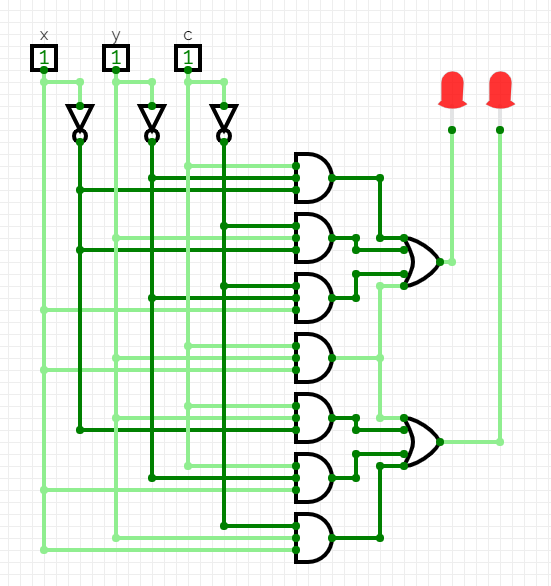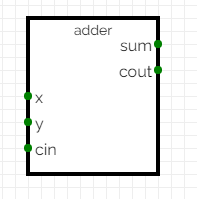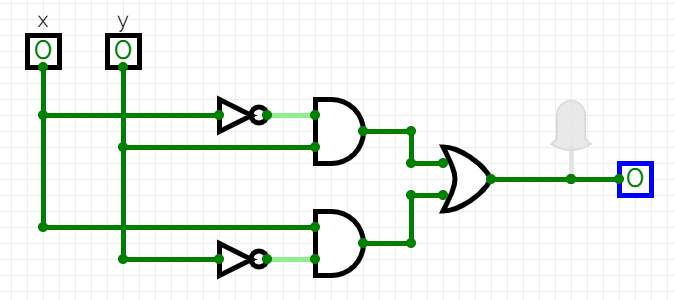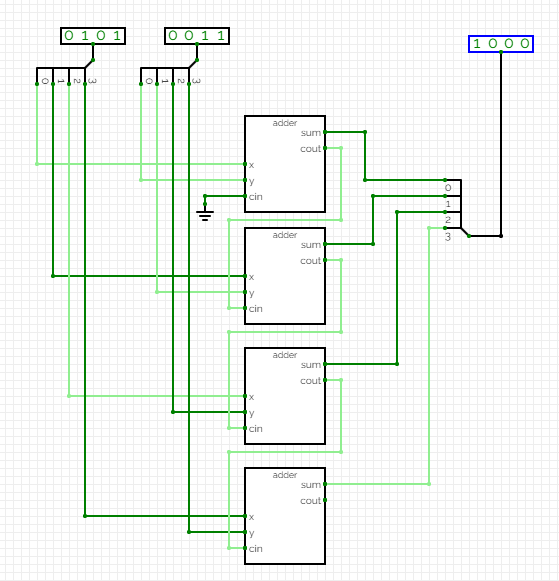Ciruits
- Circuits are a combination of gates.
- A combination circuit is a circuit whose output is soley determined by the input values.
- These will be most of the circuits we build today.
- A sequential circuit is a circuit whose output is a function of the input and the current state of the circuit.
- These are memory circuits and will be discussed later.
- I always had problems with this section because they just seemed to "Introduce" circuits.
- There is a method to get started.
- I would like to build a circuit for the xor function.
-
| x | y | $x \oplus y$ |
|---|
| 0 | 0 | 0 |
| 0 | 1 | 1 |
| 1 | 0 | 1 |
| 1 | 1 | 0 |
- Note the two rows where there is a 1 in the output.
- Write the expression that would make these true
- x = 0, y = 1 could become x'y
- x = 1, y = 0 could become xy'
- Note that the circuit is an or of these two.
- $x \oplus y$ = x'y + xy'
- We can now turn this into a circuit
- How about building something that will add three bits.
-
| x | y | c | s | c |
|---|
| 0 | 0 | 0 | 0 | 0 |
| 0 | 0 | 1 | 1 | 0 |
| 0 | 1 | 0 | 1 | 0 |
| 0 | 1 | 1 | 0 | 1 |
| 1 | 0 | 0 | 1 | 0 |
| 1 | 0 | 1 | 0 | 1 |
| 1 | 1 | 0 | 0 | 1 |
| 1 | 1 | 1 | 1 | 1 |
- s = x'y'c + x'yc' + xy'c' + xyc
- c = x'yc + xy'c + xyc' + cyc
- A save file of the circuit adder.cv
-

- If we package this up, we can build a single bit adder
-

- Connecting the cary out of one of these to the cary in of another gives s the ripple carray adder



